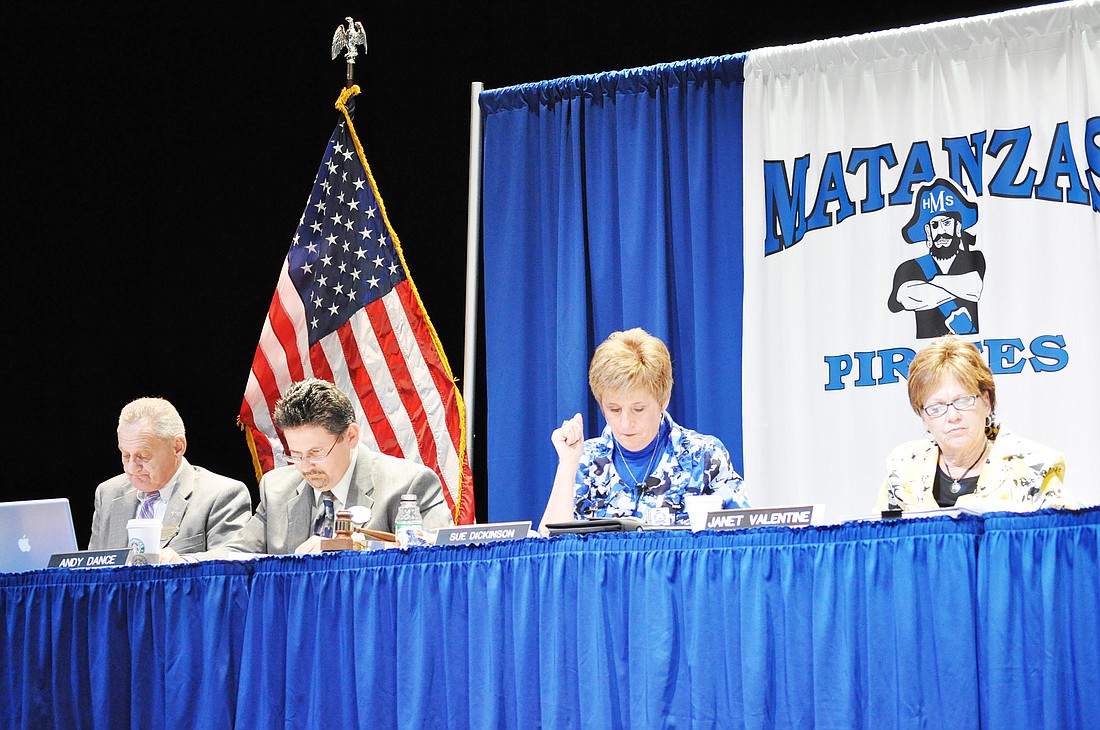- April 18, 2024
-
-
Loading

Loading

The School Board met in a workshop Tuesday, Feb. 15, to discuss money-saving options on next year’s budget.
The School Board discussed cuts to alternative education programs, including Pathways Academy and two drop-out prevention programs at Linear Park and Princess Place.
“The programs that you see on here are near and dear to everyone’s heart, but they are programs that we could do without and still meet the needs of Flagler County,” Superintendent Janet Valentine said Tuesday, Feb. 15, at a workshop at Matanzas High School.
Cutting the two drop-out prevention programs, which facilitate 38 students would save the district $87,977.
There was also discussion of doing away with Pathways Academy, an alternative school. The school costs $1,016,040 to operate and employs 10 teachers, a dean, a principal and a school resource deputy.
“We’re not talking about setting aside a program and just saying these are the individuals that will no longer have a job,” Valentine reassured the board.
But questions were raised by board member John Fischer about what would happen to the students currently enrolled at Pathways.
Valentine said that if Pathways were to be closed, those students could be shifted to the drop-out prevention programs at Linear Park and Princess Place.
Still, board member Andy Dance was not satisfied.
He suggested that he was uncomfortable making cuts to Pathways without knowing ensuring the students would still have their needs met.
“This really isn’t a savings in my mind,” Dance said.
Block scheduling comeback?
Another proposal to reduce budget expenses was to change both high schools from a seven-period day to a three-by-three block with a “singleton.” This solution would be a reduction in 26 teaching positions, saving $1.3 million.
This suggestion would give students at both high schools three block classes each semester and one yearlong class, and still give teachers planning time at the end of the day.
The plan would still allow students the option of earning 28 credits in four years, with 24 credits required for graduation.
“I don’t think you can reduce your staff in one year to get there,” said Chris Pryor, MHS Principal, who helped present this section.
When the district initially switched from block scheduling to seven-period days two years ago, it took a while to notice the savings, Pryor said.
“I believe that over a two- to three-year period, we can move to this schedule and really save a lot,” Pryor said.
This change would make students’ workloads lighter, with four classes a semester opposed to seven, and will also lower the number of students teachers are responsible for from 150 to 100.
The change in schedule would create a 45-minute window between the end of school and the end of teacher planning. Student athletes would attend a study hall before tutoring or practice in that time.
Although nothing will be set until the fall, the groundwork for budget adjustments has begun.
OTHER MONEY-SAVING EFFORTS
In the Feb. 1 board meeting, the School Board voted to reduce mileage reimbursement from 50 cents per mile to 29 cents per mile.
Since that meeting, it has been brought to the attention of the board that this should have been brougt before the union. At the Tuesday, Feb. 15, meeting, the board reinstated the 50-cents-per-mile reimbursement and will meet with the union to negotiate.
Other budget reduction options presented to the board were moving Phoenix Academy to an existing school site; reducing the number of paraprofessionals and the hours they work in a day; enforcing the two-mile limit for elementary school bus routes; and reducing by five days the work year of 206-, 216-, 226- and 261-day employees.